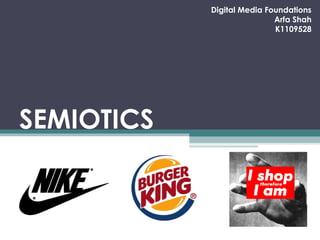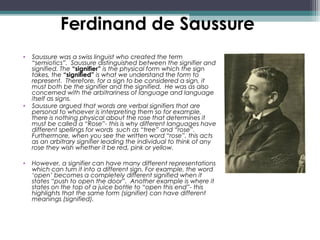The document discusses key concepts in semiotics, the study of signs and symbols. It explains that Ferdinand de Saussure distinguished between the signifier (physical form of the sign) and the signified (meaning represented). Roland Barthes focused on how signs represent cultures through denotation (literal meaning) and connotation (suggested cultural meanings). Stuart Hall theorized that media messages are encoded but audiences decode them based on their own backgrounds, and that meanings are relative rather than fixed.








